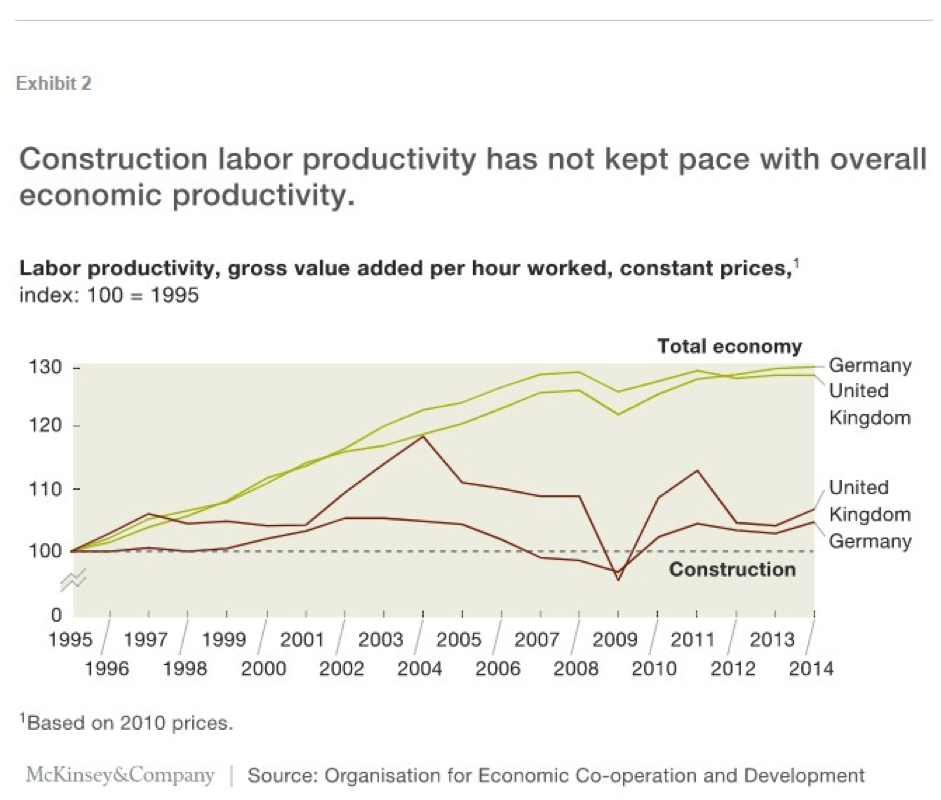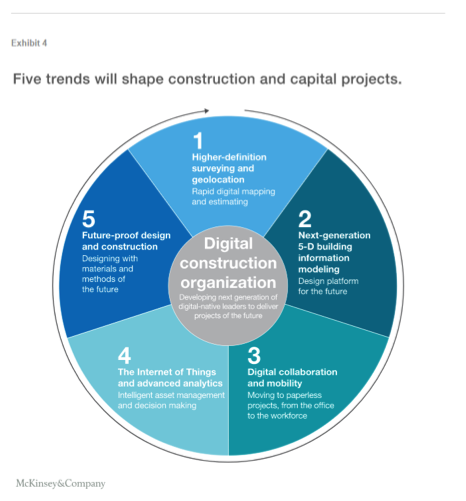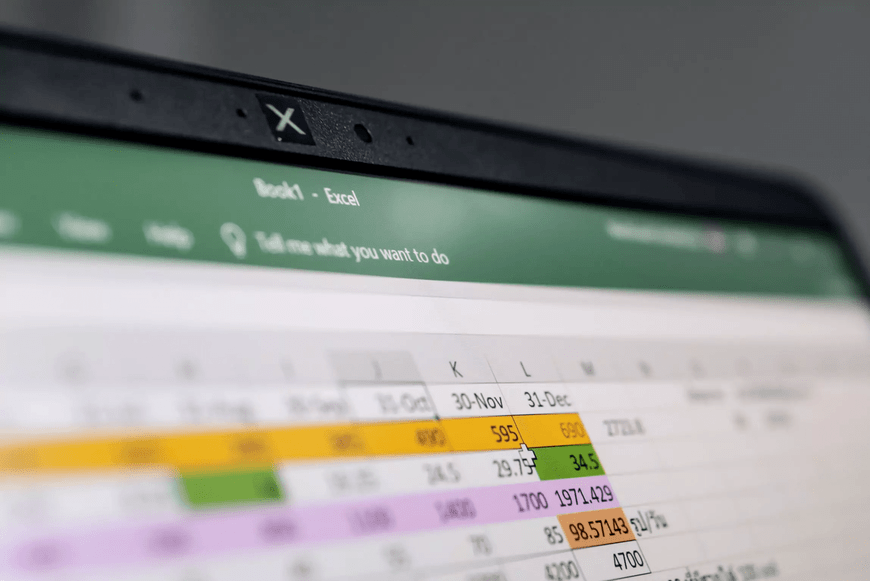
In an article published last year, Imagining Construction’s Digital Future (R. Agarwal, et al., June 2016), influential global management consultancy McKinsey paints a gloomy picture of stagnant construction productivity over the past 20 years or more.
 While this graph portrays the UK against Germany, the United States has had the same poor overall performance.
While this graph portrays the UK against Germany, the United States has had the same poor overall performance.
Construction Productivity Growth Flat Since 1995
“Large projects across asset classes typically take 20 percent longer to finish than scheduled and are up to 80 percent over budget. Construction productivity has declined in some markets since the 1990s; financial returns for contractors are often relatively low—and volatile.”
With low productivity, low financial returns, and “slow to adopt process and technology innovations,” in 2015 the construction industry as a whole spent less than 1 percent of revenues on R&D and less than 1 percent on information technology. These amounts are a small fraction of what other capital- and labor-intensive industry sectors have been investing.
And while those investment numbers have been increasing on average, the main point of the article is still valid. Innovations in technology, with improvements in skills and processes, have the potential to “transform productivity and project delivery” in the construction industry.
That translates into increased profits for companies that can make the necessary changes. Some have already embraced the new opportunities. Others are still working with traditional tools and systems, not yet convinced of the need to start the transition.
The primary focus of the McKinsey study was on large contractors and corporations, but the productivity pressures are just as intense at the level of small and medium operators. For SMEs, the difference is that the process has to be effective at the local level, first and foremost, to be worthwhile.
Turning a Global Revolution Into a Local Advantage
The authors of the report identify five main pieces of an integrated digital construction organization. A typical large company today will be working with or evaluating all 5 of these pieces in building out their digital business platform.
The technology solutions are available already. Cultural change is the central factor in determining how companies adapt to and benefit from integrating these productivity improvements.

Some SME early adopters are already engaged in most or all 5 of these trends and are well-positioned to scale their business into the construction industry of the future.
More important, in the short term, they can use their digital assets to maximize management and labor intelligence and productivity on the ground, every day, on every job. And they save administration costs while increasing business growth and profits using more and better data for better, faster business analysis.
Digital Collaboration & Mobility
Being the third item on the list of Digital Construction Organization, most small and medium organizations have not achieved full digital integration yet. But all SMEs should be engaged in the third item as a starting point if they at least want to ensure a healthy fit in the construction industry of the present.
Here’s one major reason why: the McKinsey study notes how, for larger contractors, “given the varying sophistication levels of smaller construction firms that often function as subcontractors, building new capabilities at scale is another challenge.”
That means smaller construction companies, in subcontractor bidding competitions, will most likely be judged in part by whether they use digital systems that integrate well with construction management systems.
The ability to produce, sort, and report project data in real time will be critical to working with the larger contractors that control access to major infrastructure projects and revenue streams. These larger firms will be looking for subcontractors with new capabilities that scale easily within their overall systems.
Finding the Right Fit For Construction Management Apps
Different types and sizes of construction businesses will have different needs in the digitization process. The place to start is the simple replacement of paper systems like time cards, project job-costing details, and equipment usage and status reports. Connect these first steps to the maintenance and ongoing performance of your business.
If value can be easily communicated to your customers, and other contractors can easily collaborate with you, the future of your construction business should be secure. As the authors of the McKinsey study conclude, “winners of tomorrow will take the lead in technology innovation and digitization. Resisting change is no longer an option.”











